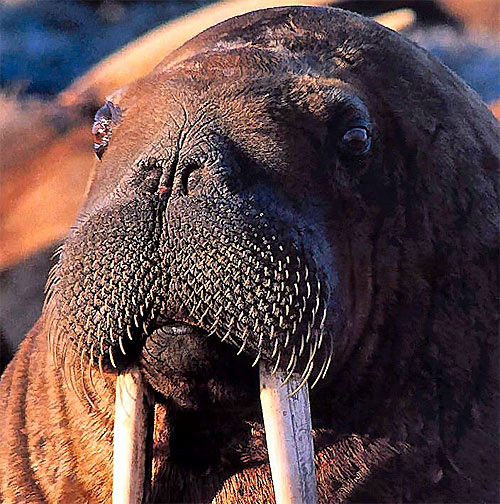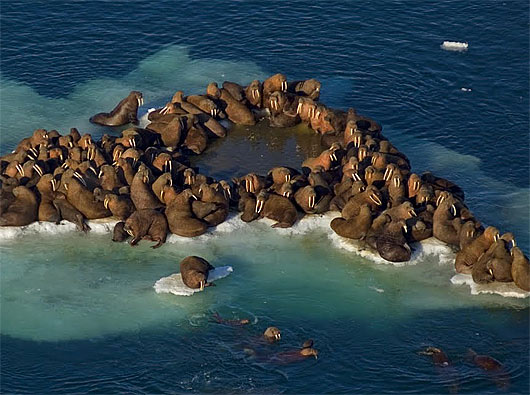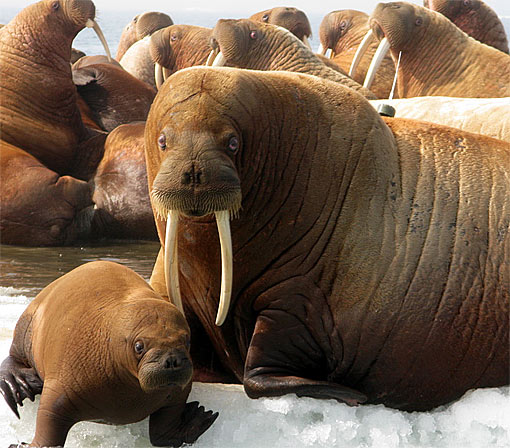Walrus – Some Really Long Tusks for a Blubbery Beast

Native to the ice ledges of the Arctic Ocean and the sub-Arctic seas of the Northern Hemisphere, the walrus is a large flippered mammal, and the only living species in the Odobenidae family and Odobenus genus. The species can be further subdivided into three subspecies: the Atlantic Walrus (from the Atlantic Ocean), the Pacific Walrus (from the Pacific Ocean), and the O. Rosmarus laptevi (native to the Laptev Sea.)

Of all the interesting features of the walrus, the one that everyone remembers is always its very prominent tusks; elongated canine teeth reaching up to 3 ft 3 in (1 m). The walrus uses its tusks for fighting, dominance, and display. In most cases, the strongest male with the largest tusks will assume an alpha status within their social group. Their tusks also come into play when the walrus needs to create and maintain a hole in the ice; and when it needs to climb out of the water and onto stable ground. Finally, it uses its tusks when searching for food on the floor of the ocean; they drag through the sediment and stir out prey. The tusks are so important, that often times the walrus will have few other teeth, as they almost aren’t even neccesary.

The walrus is also recognized by its bulky build, with males weighing up to 3.700 lbs (1,700 kg); of similar creatures, only two species of elephant seals are larger. Another highly recognizable trait of the walrus is its large whiskers, which are actually called “mystacial vibrissae”, and are used primarily in foraging and are supplied with blood and oxygen like any other apendage. Their population has thinned from constantly being hunted for its meat, fat, skin, blubber, tusks, and bones. However, the walrus is resilient, and its species continues to thrive.

